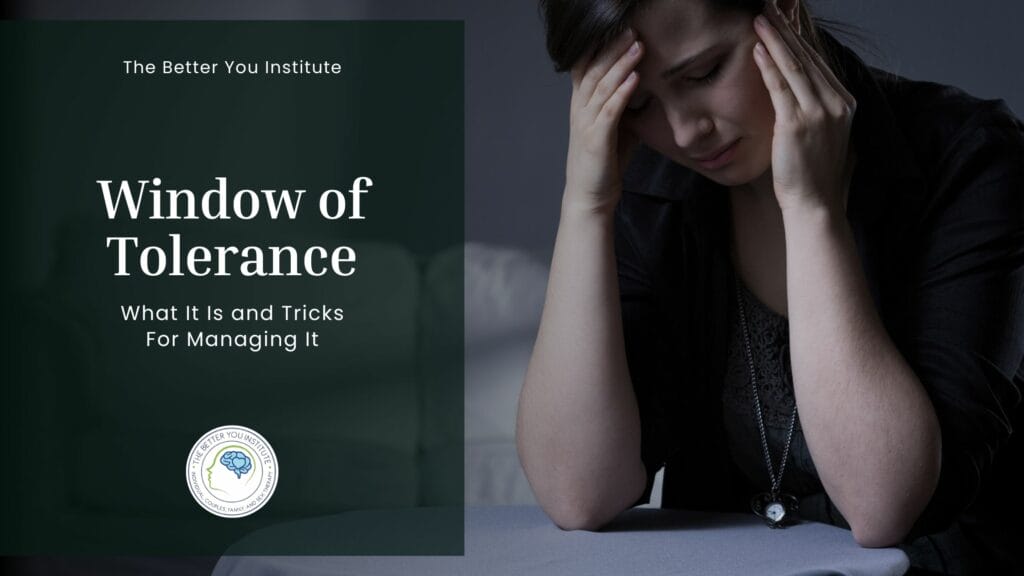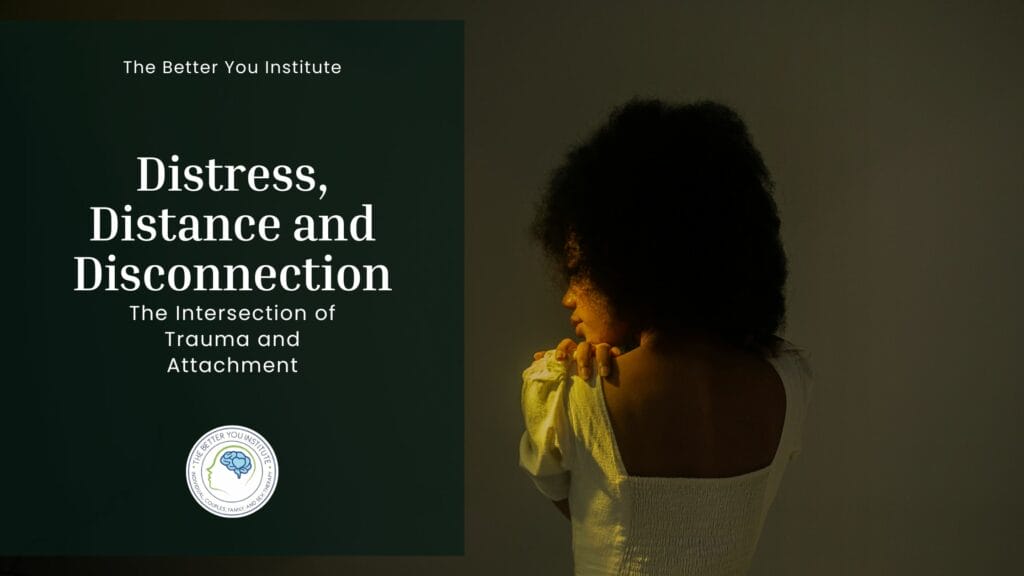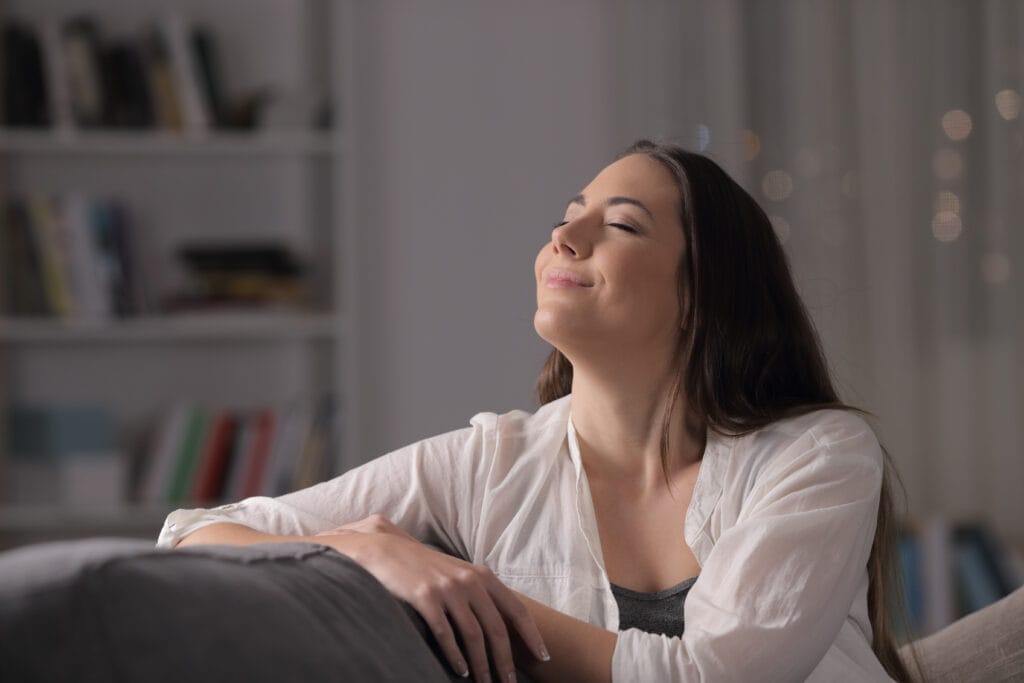Curious about why some people are more secure in relationships than others? What you know of love, connection, and relationships you learn in early childhood. Renowned family therapist, Mary Ainsworth, did a study called the Strange Situation, where, after observing children, she classified them into three attachment styles: Dismissive, Secure, and Anxious. Developing these attachment styles comes from how our primary caregivers respond (or don’t respond) to our needs as children. For instance, if every time you cried, your parent would coldly say: “suck it up,” you may have learned to hide your emotions and rely on yourself to meet your needs. You may also think that you don’t need relationships or emotional closeness. This article will detail the different types of attachment styles, how they develop and manifest, and how to move toward a more secure attachment.
Table of Contents
What are the attachment styles?
In the famous Strange Situation experiment, Ainsworth put infants in a room with their parents and had them play with toys. Ainsworth then had the parents leave the room and observed the child’s reaction. Ainsworth then reintroduced the parents and again watched the child’s reaction. The child’s reaction to the parents leaving and returning indicated the child’s potential attachment style. We will go through what category each reaction falls into below:
Secure Attachment
In the Strange Situation study, children with a secure attachment had more middle ground reactions to their parents coming and going. For example, when their parents left, they seemed a little bit worried and would whimper but could soothe themselves, and when their parents returned, they noticed and were happy to see their parents.
Case Example of Secure Attachment:
Kate has a good balance between honoring both of her needs for being alone and spending time with her partner. She has date nights with her partner once a week and sees her friends once a week. Kate encourages her partner to nurture their friendships and does not feel worried about betrayal when her partner spends time away. Instead, she feels connected. She knows her partner loves her even when she is not in their presence and wants to build upon their connection when they are together.
Kate’s parents modeled what an affectionate, close relationship looks like for her. Kate knew she could rely on her parents emotionally as they showed up for her and each other consistently. She did not question whether or not her parents would be there for her emotionally. If Kate had a hard day at school, her parents would attune to her needs and inquire about why Kate was feeling a certain way and support her in a way that she needed. Her parents helped her develop a good sense of self and high self-esteem by praising her strengths and helping her grow.
Questions to ask yourself if you suspect you have a secure attachment:
- Do I have a good balance between “me” time and time with my partner?
- Do I consistently feel like I am loved and deserve love?
- Do I trust my partner? Do I trust myself?
- Am I worthy of love?
- Do I believe I have high value?
- Do I easily open up to my partner?
- Do I feel I can rely on my partner in times of need?
- Do I feel my partner can attune to my needs and I theirs in an effective way?
Dismissive Attachment
In the Strange Situation, children with a dismissive attachment seem not to care whether or not their parent is in the room. They appear to have minimal reaction both when their parents left and when they returned. However, research shows that when the parent goes, the child still reacts internally, as evidenced by changes in physiological symptoms, such as an increased heart rate. So interestingly, the child may have learned not to show their anxiety outwardly.
Case example of a person with a dismissive attachment:
Sean is a CEO of a large corporation. He works late into the night every night. His wife and children have pointed out to him that they would like to be able to spend more time with him. Sean’s answer is always that his work requires him to spend most of his time managing the business so that he can support his family financially. Sean keeps his cell phone off during work hours and refuses to take personal calls from his family during the workday. Sean keeps everyone at arm’s length. When his wife attempts to have a conversation about serious, potentially vulnerable issues, he makes jokes to avoid the subject. Sean does not have close relationships and prefers not to share his time. He finds certain social experiences to be annoying or suffocating.
Sean’s family growing up was emotionally shallow. He was a child of narcissistic parents. His mother displayed narcissistic tendencies and mostly cared whether or not the family’s outfits matched in holiday photos. Sean’s father tolerated nothing less than perfection and required the family to be dressed and at the table at 8am every morning, or they did not get breakfast. Sean did not have emotional intimacy modeled nor given to him and, therefore, feared relationships. Sean instead valued his image and how things appeared on the outside.
Questions to ask yourself if you suspect you have a dismissive attachment:
- When others want to be close to me, do I view them as needy or overbearing?
- Do I tend to exert or lean into my independence when others ask me for things?
- Do I consider needing others weak?
- Does talking about my needs/feelings with others make me extremely uncomfortable?
- Does it seem silly or pointless to talk about feelings?
- Do I seek support from my partner if I am stressed, or do I isolate myself?
- Do people give me feedback that they would like to spend more time with me or wish I would open up more?
Anxious Attachment
Children in the Strange Situation experiment who became very distressed outwardly by the absence and reintroduction of the parent were thought to have an anxious attachment. These children struggled to soothe themselves when they became upset when the parents left and came back. The parents also could not settle the child. People with anxious attachment display a push and pull ambivalence in their relationships. They often feel the need to become close very quickly but fear abandonment.
Case Example of Anxious Attachment:
Jared always had difficulty being apart from his partner. Whenever he is not in a relationship, he describes feeling empty. He prefers to be around his partner as much as possible, and whenever his partner asks for alone time, he becomes very uneasy and fears they no longer love him. Jared needs constant reassurance that his partner likes him and that things are going well throughout the relationship. Jared tends to move quickly in relationships and will say “I love you” early in the relationship and feel rejected if the other person is not going at the same pace emotionally as he is. Jared tends to question others’ motives and second guess himself constantly.
Jared’s parents divorced when he was 12. The divorce was not amicable, and Jared was tossed back and forth between households, often feeling rejected by both parents. Jared’s mother acted more like a friend than as a mother. At times she doted on Jared. She mostly displayed this behavior when she wasn’t drinking excessively. Jared’s mother tended to drink often and stated it helped her relax. She was barely involved in Jared’s life when she would drink excessively. Jared constantly worried about his mother’s health and was distressed at her drinking. Dad would only get Jared on the weekends and would sometimes be present, but other times leave Jared with a babysitter if he had a date. These interactions often left Jared confused about his relationship and role with his parents.
Questions to ask yourself if you suspect you have an anxious attachment:
- Do I want to get very close very quickly when I am in a relationship?
- Is it torture to be apart from my partner?
- When my partner is away, do I worry myself so much that I participate in behaviors that cause issues within my relationships?
- Am I constantly suspicious of my partner’s behavior and feel the need to snoop through their belongings/electronic devices?
- Do I frequently fear my partner will leave me?
- Do I worry I care more about my partner than they care about me?
Disorganized Attachment
Someone with a disorganized attachment will have a push-pull approach toward relationships. They might deeply crave extreme closeness and be clingy to their partner at moments and then at other times appear aloof or detached. Their source of love was also their source of fear. Naturally, this can lead to confusion because seeking comfort frequently results in pain or fear.
Case Example for Disorganized Attachment
Tom states he doesn’t want to be in a committed relationship ever. Yet, on occasion, Tom has divulged that he would love to be with a girl he finds so beautiful he doesn’t care what she looks like. Tom has a crush on his friend’s sister, Alicia. The feelings are mutual, and the two will hook up casually and sporadically. Alicia has a gut feeling that Tom is in love with her and will catch him being considerate of her needs and doing elaborate favors. However, anytime Alicia tries to see him again or get closer, Tom will ghost her. Instead of being with Alicia, Tom has a dependent relationship with her brother. He is close to her but not too close.
Tom grew up with 12 siblings. His parents both worked several jobs to try to support the family but were stressed and emotionally unstable. Tom’s family mostly lived off of government assistance. Tom went to bed hungry most nights and only wore clothes passed down from siblings. Tom was often neglected emotionally and physically and sometimes beaten by his father whenever his father had too much to drink. Tom’s older siblings seemed to bond, but Tom felt left out of that connection. While Tom could understand his parents were doing the best they could, he also felt pain and sometimes fear from them. Tom dropped out of high school when he was 16 and started looking for connections in all the wrong places, such as selling drugs. His parents did not intervene when he dropped out and instead asked if he could help support the family if he was working.
Questions to ask yourself if you suspect you have disorganized attachment:
- Do I feel conflicted about committed relationships?
- Do I act toward my love interest in a dismissive manner rather than openly affectionate?
- Do I deeply crave a strong connection with someone but act like I don’t?
- Will, I one moment seek intense closeness toward my partner then, if triggered, suddenly switch to a more dismissive style?
- Do I have an intense fear of abandonment?
- Do I feel disassociated from my relationships at times?
Abuse and Attachment Styles
As you may guess, abuse can significantly affect our sense of safety and security in a relationship. The fourth attachment style which commonly is present when someone has been through childhood abuse is disorganized attachment. In the Strange Situation, those infants with disorganized attachment might display ambivalence toward their caregiver, engaging in confusing behavior such as walking backwards towards their caregiver.
Can my attachment style change?
If you are worried about having a particular attachment style, you have good news. Your attachment style can change! As a result, you can move towards a more secure attachment style in your adult relationships. Changing will take work and persistence, however. The type of work needed may vary depending on your attachment style. For example, someone with a dismissive attachment style may need to work on tolerating closeness and moving toward people rather than away.
Essential skills to move toward feeling secure in your relationships according to your attachment style:
Secure Attachment:
- Continue to set boundaries and honor your limitations
- Continue to honor your needs and be compassionate to others’ needs
- Have open conversations with your partner and compassionate self-talk, being vulnerable and open to change
Dismissive Attachment
- Ask for help and embrace the discomfort that may come with that
- Go to an activity or call a friend and look for the positive, fun parts of this experience (vs. the annoying or scary parts)
- Open yourself up to trusting that others can meet your needs, that you don’t have to be self-reliant like you did when you were younger
- Try small tasks that you can delegate to someone you want to trust. Process what happens after, let the positive outcome sink in for you
- Share something vulnerable with someone and ask them for support. See how it feels to receive their support and pay attention to how they respond to you. Were they able to show up for you?
Anxious Attachment
- Find a balance between your alone time and time with others if you have trouble being alone.
- Practice being alone! Schedule an hour more than usual of doing something by yourself. Turn off your phone, don’t watch television, or listen to music/podcasts. Disconnect from everything but yourself.
- Learn to trust yourself and be able to soothe yourself in times of distress
- When you are not physically close to someone, practice sitting in the discomfort of being away from them – don’t text/call them, if your mind wonders to obsessive thoughts, practice mindfulness or soothing yourself
- When you feel emotionally disconnected from someone, own this disconnect. When the person is able to show up for you, store this in your memory for the next time you become anxious or disconnected to recall and remind yourself that they are there for you and you are connected
Disorganized Attachment
- Create a strong “chosen family” of friends. This will help you learn to feel secure with others to be there when you need them
- Define what a strong chosen family is to you – reliable, emotionally stable, shows up for you physically and emotionally, gives you space when you need it, accepts your boundaries
- Get a pet. The unconditional love a pet can give you can be so healing
- Journal your emotions in response to others. Track your ups and downs (push/pulls) and start to learn your triggers
- Use this awareness to practice leaning in or setting boundaries on your own to become more self-sufficient and secure
Conclusion of Attachment Styles
Therapy can be an excellent resource if you need support navigating security in your relationships. If you can build a secure, trusting relationship with your therapist, it can help immensely with healing insecure attachments. Remember that you are not doomed to always be insecurely attached; you can move toward a more secure attachment. If you are interested in finding a therapist who can help you find security in your relationships, you can call The Better You Institute at (267) 495-4951.
Meet The Author:

Courtney Miller, LPC
Licensed Professional Counselor
Courtney Miller, LPC, is a Licensed Professional Counselor with a warm, empathetic approach, specializing in children, teens, and young adults, including the LGBTQ+ community. Utilizing her artistic background, she employs creative and experiential methods in therapy. Courtney focuses on overcoming mood disorders, trauma, and relational dynamics, particularly addressing C-PTSD and narcissistic wounds. She emphasizes understanding patterns and enhancing existing strengths, offering tools like mindfulness and thought reframing. With a BA in Psychology and Fine Art from SUNY New Paltz and an MA in Mental Health Counseling from CUNY Brooklyn, she has experience in family dynamics and LGBTQ+ youth support. Based in Philadelphia, Courtney enjoys crafting, travel, biking, and spending time with loved ones.
Learn more about Courtney Miller ⇒







